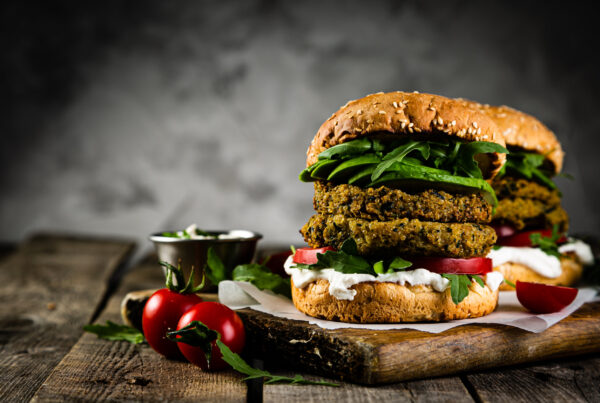”Virginia, have you ever experienced a plateau in your weight loss? There are many different reasons why you may no longer be making progress. This week's article examines several, along with offering solutions. We hope you find these helpful in your weight loss journey!
Reading time: 14 Minutes
MWi Hack:
- Understand all of the components that go into continuous improvement
- Learn to problem solve your plateaus
MWi Summary:
- Weight loss is challenging, and can get even more challenging as you begin to make progress.
- There are several reasons you may be experiencing a plateau in your progress. Some may include faulty calorie counting, loss of lean mass, or not getting enough exercise in.
Understanding your Journey
If you’ve been working toward the goal of losing weight, you may be surprised by how hard it is. Do you ever feel that just as you start to see progress, your body seems to stop responding to the changes you make in your diet and activity levels? Or maybe you’re on a maintenance diet and, upon stepping on the bathroom scale, find that you’ve shot up a couple of pounds.
Overview
If you’ve experienced this frustration, you’re not alone. Though you may be working hard at losing weight, your body is going to work even harder to keep energy intake and output in balance. The simple truth is that your body doesn’t like to lose weight. In fact, your efforts to burn more calories can eventually slow down the process.
The challenge of weight loss plateaus can be incredibly frustrating. There may be some physiological explanations for this, particularly in the early stages of a diet, but it can also happen if you let old habits creep back into your routine.
Everyone’s weight fluctuates. However, if these fluctuations go on for a month—or your weight loss comes to a complete halt—here’s how you can figure out the cause and get back on track.
Why Plateaus Happen
Understanding what’s happening during a plateau, why it happens, and what you can do about it will also reassure you that the stall isn’t necessarily your fault.
Too Few Calories
It takes calories to burn calories. When you decrease your food intake, your body lowers its metabolic rate in response. If you’re not eating enough calories, or you’re inconsistent, your body (and metabolism) may respond erratically.
Solution: If you aim for a total calorie intake that’s slightly below your maintenance calories, you’ll keep your metabolism in high gear. Keep in mind that a deficit of more than 500 to 700 calories will make it much more difficult to maintain lean body mass.
Everybody’s caloric needs are different. Gender, activity level, and your overall state of health will influence how many calories you need.
Not Watching Portions
You probably measured your food at the beginning of your diet, but have you gotten less careful about monitoring portion size? It’s easy to make tiny increases in the amount of food you pour into a bowl or spoon onto your plate, and inaccurate portion size guesses can add up.
Solution: Take a week to measure your food again, just like you did at the beginning of your diet. Use a digital scale for the most accurate reading, especially for produce, meat, and other foods that aren’t easily portioned with measuring cups or spoons.
Faulty Calorie Counting
You may be tracking your daily intake of calories and nutrients with a paper journal or an online app. If you’ve started to enter foods by memory, there is a good chance you’ve been forgetting to add a food here and there or entering an incorrect portion size.
Solution: Having a tracking app on your phone can make it convenient, but if you prefer to take notes by hand, keep a small notebook in your bag. You can also try setting an alarm on your smartphone to remind yourself to record your food intake.
Too Many Calories
If you have lost weight successfully so far, the number of calories you need to eat every day has probably started to decrease. As your body gets lighter, it requires fewer calories to move through your normal daily activities.
Solution: Go back and re-evaluate the number of calories you need to eat to lose weight. Be honest and realistic about your activity level. You may be overestimating how many calories you burn with exercise.
Loss of Lean Body Mass
Muscle burns fat. If you lose muscle, you’ll burn fewer calories. Lean body mass requires five times as many calories as fat mass. When the lean muscle is lost, your metabolism drops. In response, weight loss will slow or stop.
Solution: Make sure you’re engaging in your exercise program with a fully nourished body. Your diet should create a safe calorie deficit. If your energy levels and motivation seem to be dipping, you may want to consider taking a multivitamin to prevent any nutrient deficiencies.
You’ve Lost Weight
While weight loss may be your goal, don’t forget that when you weigh less, your body needs fewer calories to function. When you lose any amount of weight, your body’s energy requirements will be reduced.
Solution: Consider starting a weight training program to help increase your lean body mass. Muscle will add to caloric burn and keep your body strong. It may not be safe to continue to decrease the number of calories you’re eating, so you’ll need to add in more activity. A strong, nourished body will be able to keep up with more intense or frequent workouts.
Your Body Adapted
When you start a new exercise program, your body will begin to make changes. At this stage, your muscles are rebuilding themselves—a process that requires calories.
Eventually, your body will stop adapting to increased workloads. Unless you change up your routine, you’ll be burning fewer calories for the same activities.
Solution: The key is to make sure your body doesn’t have time to “get used to” the exercise routine you take on. Maintain your body’s adaptation period by changing the intensity, duration, frequency and/or the mode of exercise. You may want to include interval training as well.
Not Enough Exercise
Do you compensate for your workouts by spending the rest of the day sitting at your desk or laying on the couch? If you are sedentary for most of the day, you’ll miss out on the many benefits of exercise.
Solution: Boost your non-exercise activity thermogenesis (NEAT) by adding movement to daily tasks. Stand up and work at your computer; take the stairs instead of the elevator; or do easy household chores while you watch television. Activities like walking the dog and gardening are also great ways to boost NEAT.
You Need More Muscle
You may find you’re losing muscle when you lose weight. Even if this makes the number of the scale go down, it’s not ideal. Your metabolism slows when you lose muscle, so you’ll want to focus on losing fat while keeping—and building—muscle.
Solution: Make sure that at least two of your weekly workouts include strength training. This doesn’t mean that you have to become a bodybuilder, but simple bodyweight exercises like push-ups and lunges will help you maintain healthy body composition.
Not Enough Protein
Protein has been shown to balance out some of the metabolic adjustments that happen when you lose weight. Researchers believe this is because protein helps us to maintain the muscle we have and build new muscle.
Solution: Evaluate the nutrient balance of your current diet. Make sure that you are getting enough protein to adequately build the muscle you need to maintain a healthy metabolism.
Not Exercising Efficiently
The more you do something, the better you get at it. As your body becomes more efficient at the exercises in your workout, it will need fewer calories to perform them.
Solution: As efficiency is another sign your body is adapting, the trick is to prevent your body from reaching the point where an exercise is too easy. At this stage, you may need to make a major change. If you’ve been using the treadmill for two weeks, try switching to the rowing machine or stationary bike. This may also be the appropriate time to make changes to your weight training program.
Exercising Too Much
When you exercise too much, there is a point of diminishing returns when an increase in exercise energy expenditure is negated by an equal decrease in non-exercise energy expenditure. In other words, when you increase your exercise intensity, your body responds by decreasing the number of calories you burn during the rest of your day.
Solution: Take time to recover. Exercise burnout is a sign you need a break for a few days—but that doesn’t mean you have to be completely inactive. Try something gentle like yoga or a stretching routine.
Once you’ve given your body some rest, ease back into light exercise and increase your intensity only when necessary.
You’re in Better Shape
Your body becomes more energy-efficient as your physical health improves. A lower resting metabolic rate means your body needs fewer calories to perform normal daily activities, as well as exercise. Improvements in health aren’t just reflected by the scale: improved cardiovascular fitness can show up as a lower resting heart rate.
If you commit to a new exercise program and stuck with it, your fitness level has probably increased. While this represents meeting a goal in and of itself, it also means your body doesn’t need to work as hard, or burn as many calories, to complete the same amount of work.
Solution: If you are healthy enough for vigorous activity, now is a good time to add high-intensity interval training to your weekly schedule. You can also begin a circuit-training program. A circuit workout builds muscle and burns calories with aerobic activity in a shorter period of time. You can also add a second easy workout to your day to burn extra calories. Try fitting in a morning walk or bike ride after work.
You’ve Lost Motivation
When you first start a diet, your motivation is high and you enjoy the “honeymoon phase” for a while. It’s not uncommon for people to hit a plateau in the phase that follows. At this point, reality sets in, and your frustrations may ramp up, dwindling your motivation.
Solution: Take the time to acknowledge and be proud of the progress you’ve made so far. In a way, a weight loss plateau is actually a sign you’ve been doing a lot of things right. Try setting a short-term goal for yourself and use new motivational techniques to recapture some of your initial enthusiasm.
You Need a New Goal
Hitting a plateau is the perfect opportunity to stop and check-in with yourself. You may find that there are several reasons for the plateau—and you may benefit from making adjustments to your goal.
For example, while you may want to lose more weight, your body may feel the weight you’ve reached is healthy. Ask yourself how you feel in your body right now: Do you feel happy and healthy? Would you be content to stay in the maintenance phase?
Solution: If you feel you still have weight left to lose, evaluate where you are right now and start by setting small, short-term goals.
Medical Causes
While plateaus are normal and just about every person will experience one when they start a diet, if you’re finding that nothing seems to be breaking the plateau it may be time to check in with your doctor.
In some cases, a medical cause may be impeding your weight loss.
Solution: Make an appointment to talk to your doctor. First, they’ll help you get to the bottom of what’s preventing you from making progress toward your weight loss goals. In some cases, medication or surgery may be an option for you.
Low-Carb Diet
If you’re on a low-carb diet, you probably know how easy it can be to let carbs creep back in—often without you even realizing it. After you’ve been eating low-carb for a while, you may feel like you can “wing it”—that is, stop counting carbs or estimating. It’s also normal to overindulge at times, which you may rationalize by thinking you’ll just “make up for it” in some other way.
Avoid Carb Creep
Most low-carb plans, such as Atkins Diet and South Beach Diet, encourage you to increase your carbohydrate intake after the induction phase—however, you’ll still need to be diligent about following the guidelines. If anything, once you start adding carbs back into your diet, you’ll need to be even more aware of what you’re eating.
Sometimes, the best course of action is to return to the induction phase and start over. Remember: There’s no shame in rebooting your diet plan once you’ve figured out what does (and doesn’t) work for you!
Eat When You’re Hungry
The first week or two of a low-carb diet can be challenging, but any food cravings you experience will eventually go away once your body adapts to lower carb intake. If you’re eating the right amount of carbs, you won’t experience extreme cravings. Rather, you’ll go through normal patterns of hunger and satiation.
Focus on listening to those signals and eating according to what your body is telling you. Often times we get into habits where we eat according to a schedule or even by rote. Tuning in to your body’s hunger signals will help you eat when your body truly needs fuel—and stop when the need has been met.
Don’t ignore your hunger cues. Depriving your body of energy can lead to overeating.
There are some caveats, though. For example, at night your basal metabolic rate (the rate by which you burn calories at rest) tends to slow down. You may want to time your evening meal and snack so it’s not too close to bedtime. Not only will this help prevent weight gain, but eating too close to when you go to bed can also cause sleep troubles like indigestion and acid reflux.
Exercise
Early in your diet, it’s possible to shed pounds through caloric restriction alone—but you will be unlikely to maintain the loss if you remain sedentary. To sustain weight loss, strengthen your body and get it moving, too. Regular exercise, ideally with some strength training, can help prevent plateaus.
Building lean muscle creates energy stores the body can fill during periods of rest.
Exercise has other benefits, too: the release of hormones, such as endorphins, can enhance your mood, mental acuity, and energy levels.
Ketosis
Ketogenic diets are designed to achieve ketosis; the state where your body is burning more fat for energy rather than sugar from carbohydrates. The byproducts of increased fat metabolism are called ketone bodies. If you’re eating a keto diet, you’ll be increasing your intake of healthy fats and reducing carbs.
To reach ketosis, you may need to drastically cut carbs. The exact amount needed to achieve ketosis varies from person to person: You may be able to get there eating 100 grams carbs per day or you may need Atkins induction levels.
If you’re considering a Keto diet, talk to a qualified nutritionist before you get started. With guidance, along with at-home tools like urine test strips to measure ketones, you’ll be prepared to try the diet safely.
Basics of Fat Fasts
If you’re on a low-carb diet, you may already know about the Atkins Fat Fast. Some people have found the method helpful to break a weight loss plateau. The three to five day fast restricts you to 1,000 calories a day—80 to 90 percent of which comes from fat.
The Atkins Fat Fast puts your body into ketosis by minimizing the carb intake and loading your diet with healthy fats from foods like avocados, macadamia nuts, and cream cheese.
While it can be effective, the plan may not be the right choice for you. Talk to your doctor or a nutritionist before starting any kind of fast or major dietary change.
Strategic Weigh-Ins
Unless your doctor has instructed you to closely monitor your weight each day, daily weigh-ins are generally not helpful and may even add to your stress. Everyone experiences weight fluctuations not just day-to-day, but throughout a single day.
Factors like fluid balance, your body composition, whether you’ve gone to the bathroom, and hormones (for women who menstruate) that can cause fluid retention, contribute to these changes.
Successful weight loss that sticks is invariably a slow-and-steady process. It’s a good idea to track your progress, but you’ll get a more accurate sense of true weight loss if you weigh yourself once a week rather than daily. Be sure that you weigh yourself the same way, preferably at the same time of day and on the same scale, at each weigh-in.
Consistency is key to accurately track your weight trend over time.
An Exception to the Rule
If you are on a diet but your weight has plateaued for more than a month, weighing yourself more frequently can help you determine what’s causing your weight loss to stall. If you pair these check-ins with other data, like a food journal or activity tracker, you’ll have the tools and motivation you need to make any changes needed to get yourself back on track.
Consider buying a scale that tracks body fat as well as weight. While the calculation may not be strictly accurate, it can provide useful clues about other causes of weight-loss plateaus. It can also help you gauge your progress more accurately, like by reassuring you that you’re losing fat and gaining muscle (which may explain why the number on the scale hasn’t budged).
MWi would like to thank Paige Waehner for sharing her expert insights with our community through the Verywellfit Platform. Read the original article:
https://www.verywellfit.com/understanding-weight-loss-plateaus-1229951
More on the Author:
Paige Waehner is a former writer for Verywell Fit covering exercise. Along with being a certified personal trainer for more than 16 years, Paige is the co-author of “The Buzz on Exercise & Fitness,” and author of the e-book “Guide to Become a Personal Trainer.” Paige has written articles for Desert Paradise, Pregnancy Magazine, Runner’s World, and many other websites, newsletters, and magazines. Paige is certified for personal training through the American Council on Exercise. She also holds a Bachelor’s Degree from the University of Memphis.






